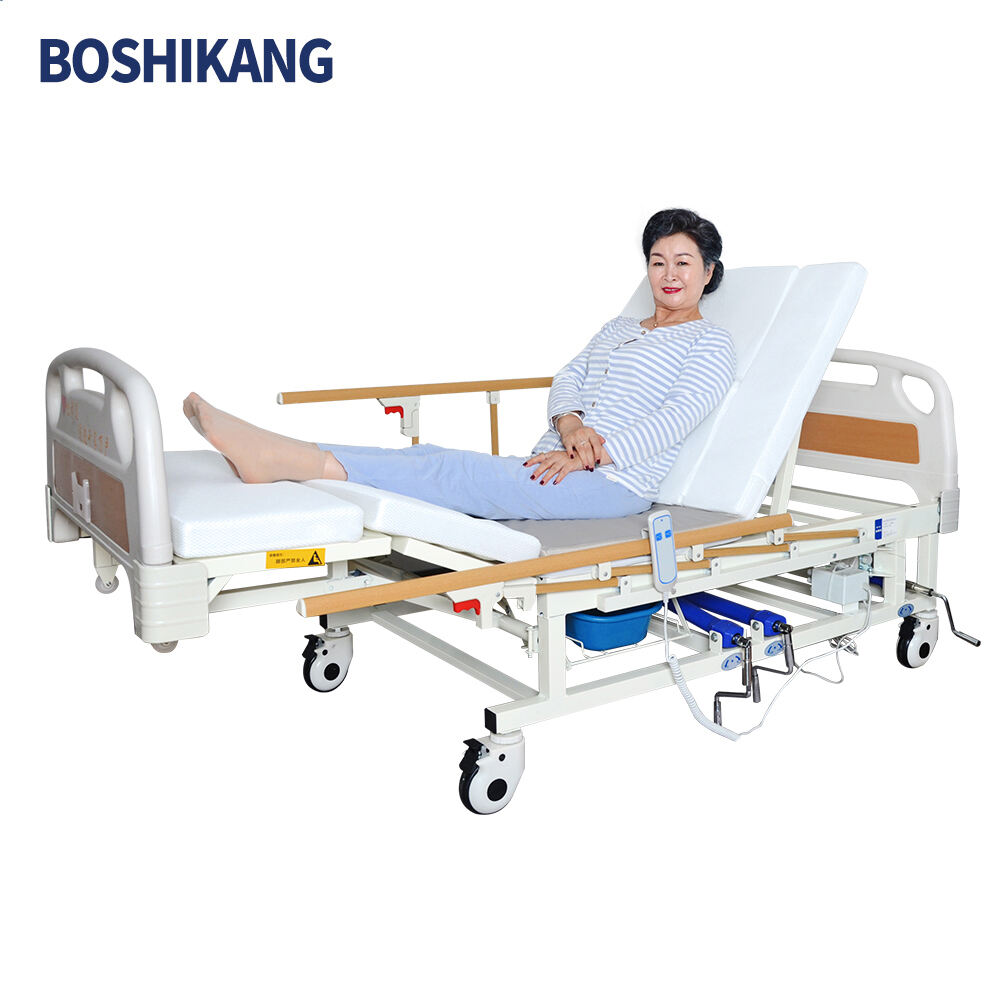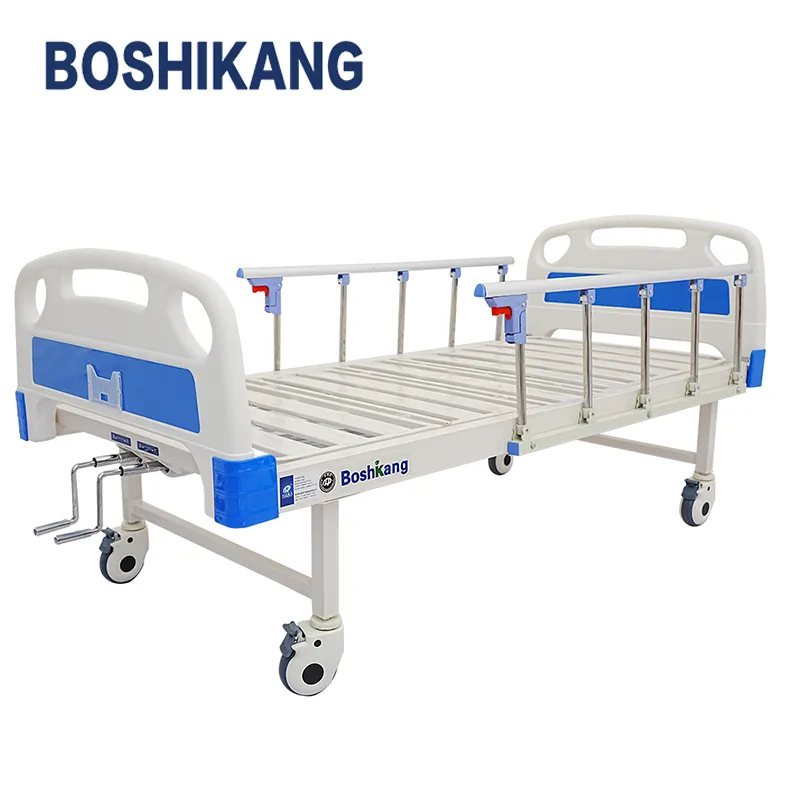A fejlett orvosi ágyak kritikus szerepének megértése a modern egészségügyben
A mai dinamikusan változó egészségügyi környezetben orvosi ágyak elhanyagolhatatlan szerepet töltenek be a betegellátásban. Ezek a speciális eszközök messze túlmutatnak az egyszerű kényelem biztosításán: olyan kifinomult platformként szolgálnak, amely több funkciót integrál a betegek gyógyulásának elősegítése, az ápolói feladatok egyszerűsítése és az egészségügyi eredmények javítása érdekében. A modern orvosi ágyak a mérnöki innováció és az orvosi szükséglet tökéletes ötvözését jelentik, hogy megfeleljenek a kortárs egészségügyi környezet összetett igényeinek.
Az egészségügyi intézmények világszerte egyre inkább felismerik a minőségi orvosi ágyak átalakító hatását a betegélményen és a klinikai hatékonyságon egyaránt. Az intenzív ellátást nyújtó létesítményektől kezdve a hosszú távú rehabilitációs központokig ezek az ágyak számos területen bizonyították értéküket, hozzájárulva a jobb betegellátási eredményekhez és a javult működési hatékonysághoz.
Fokozott betegkomfort és felépülés
Testreszabható Pozicionálási Beállítások
Az orvosi ágyak korábban elképzelhetetlen szintű rugalmasságot kínálnak a betegek pozícionálásában, lehetővé téve a pontos beállításokat, amelyek jelentősen befolyásolhatják a gyógyulást. Az egészségügyi szakemberek könnyedén módosíthatják az ágy fejtámláját, lábtámláját és teljes magasságát, hogy optimális terápiás pozíciót érjenek el. Ez a rugalmasság különösen értékes különböző orvosi állapotok kezelése során, a légzési problémáktól kezdve a keringési zavarokig.
A finom beállítások lehetővé tétele segít megelőzni olyan szövődményeket, mint a nyomáseszközök, és javítja a vérkeringést. A betegek minimális fizikai terheléssel váltogathatják a pozíciókat, ami különösen előnyös a gyógyulás kritikus fázisaiban.
Nyomáselosztási technológia
A fejlett orvosi ágyak kifinomult nyomáselosztó rendszereket tartalmaznak, amelyek automatikusan alkalmazkodnak a beteg mozgásához és testsúly-eloszlásához. Ez a technológia jelentősen csökkenti a nyomás okozta sérülések kockázatát, amelyek súlyos komplikációk lehetnek hosszabb kórházi tartózkodás során. A matrac felülete aktívan reagál a beteg testhelyzet-változtatásaira, így biztosítva az egész nap és éjszaka át tartó, folyamatos támogatást és kényelmet.
Ezek a nyomáscsökkentő funkciók különösen fontosak a korlátozott mozgékonyságú betegek vagy műtét utáni gyógyulás alatt állók számára. A testtömeg egyenletes eloszlása segít megőrizni a bőr épségét, elősegíti a gyógyulást, és csökkenti a szövődmények valószínűségét.

Javított betegbiztonsági funkciók
Fejlett eséselhárító rendszerek
A modern orvosi ágyak kifinomult eséselhárító mechanizmusokat tartalmaznak, amelyek jelentősen növelik a betegbiztonságot. Ezek közé tartoznak az állítható oldalfalak, az ágyelhagyás-jelző rendszerek és a magasságállítási lehetőségek, amelyek lehetővé teszik az ágy közel a padlóhoz történő lesüllyesztését. Ezeknek a biztonsági funkcióknak az integrálása segíti a gyógyintézeteket abban, hogy magas szintű betegvédelmet biztosítsanak, miközben csökkentik az ápolói személyzet terheltségét.
Az ágyak intelligens figyelőrendszere képes érzékelni a beteg mozgásmintáit, és riasztja az ápoló személyzetet, ha esésveszély áll fenn. Ez a proaktív betegbiztonsági megközelítés hatékonyan hozzájárult a sérülések számának csökkentéséhez az egészségügyi intézményekben.
Vészreakció funkciók
A kórházi ágyak sürgősségi helyzetekre gyors reakciót biztosító funkciókkal vannak felszerelve. A gyorsoldó mechanizmusok azonnali újraélesztési pozícióba hozzák az ágyat, míg az integrált mérlegek lehetővé teszik a beteg súlyának ellenőrzését anélkül, hogy mozgatni kellene. Ezek a sürgősségi funkciók biztosítják, hogy az egészségügyi szakemberek hatékonyan és gyorsan tudjanak reagálni életveszélyes helyzetekben.
Az akkumulátoros tartalékrendszer beépítése biztosítja, hogy az ágy alapvető funkciói áramkimaradás esetén is működjenek, fenntartva ezzel a betegbiztonságot váratlan helyzetekben.
Ápolói hatékonyság és ergonómia
Egyszerűsített betegellátás
Az egészségügyi dolgozók jelentősen profitálnak a modern kórházi ágyak ergonomikus tervezéséből. Az ágy magasságának és pozíciójának beállítási lehetősége csökkenti a betegek ellátása során fellépő fizikai terhelést. Ezek a funkciók segítenek megelőzni az egészségügyi személyzettel kapcsolatos munkahelyi sérüléseket, miközben javítják az általuk nyújtott ellátás minőségét.
A mozgássegítő eszközök és a könnyen használható vezérlők integrálása lehetővé teszi az ápolók számára, hogy minimális fizikai erőfeszítéssel kezeljék a betegek helyzetét. Ez a hatékonyság több időt jelent a közvetlen betegellátásra, és csökkenti a gondozó fáradtságának kockázatát.
Integrált gondozási funkciók
A modern orvosi ágyak gyakran olyan beépített funkciókkal rendelkeznek, amelyek megkönnyítik a szokásos kezelési eljárásokat. Az integrált mérőrendszerektől kezdve az orvosi berendezések tárolási megoldásaiig ezek az ágyak az egészségügyi ellátás napi feladatainak egyszerűsítésére szolgálnak. A fenti funkciók gondos integrálása segít csökkenteni az adminisztratív feladatokra fordított időt, és növeli a közvetlen betegellátás idejét.
További funkciók, mint például beépített IV-pólusok, vízelvezetési zsáktartók és kiegészítő vasúti vasúti vasúti vasúti vasúti vasúti vasúti vasúti vasúti vasúti vasúti vasúti vasúti vasúti vasúti vasúti vasúti Ezek az integrált megoldások segítenek a szervezett gondozási környezet fenntartásában, miközben javítják a munkafolyamat hatékonyságát.
Technológiai integráció és nyomon követés
Okos Megfigyelő Rendszerek
A legújabb orvosi ágyak fejlett monitorozási funkciókkal rendelkeznek, amelyek valós idejű adatokat szolgáltatnak a beteg helyzetéről, mozgásáról és életfunkcióiról. Ezek a smart funkciók lehetővé teszik az egészségügyi szakemberek számára, hogy távolról kövessék a beteg állapotát, és gyorsan reagáljanak minden aggasztó változásra. A monitorozási technológia integrálása hozzájárul a betegek ellátásának javításához, miközben optimalizálja a személyzet erőforrásait.
A figyelőrendszerekből gyűjtött adatok integrálhatók az elektronikus egészségügyi rekordokba, így értékes betekintést nyújtanak az ellátástervezésbe és a kezelések módosításába. Ez a technológiai integráció támogatja a bizonyítékokon alapuló döntéshozatalt, és segít fenntartani a teljes körű betegdossziékat.
Kapcsolódó Ellátási Megoldások
A modern orvosi ágyak csatlakoztathatók a kórházi információs rendszerekhez, lehetővé téve a zavartalan kommunikációt a különböző osztályok és az ellátócsapat tagjai között. Ez a kapcsolat biztosítja, hogy minden egészségügyi szolgáltató hozzáférhessen a beteg pozícionálásával, mozgásképességével és ellátási igényeivel kapcsolatos naprakész információkhoz.
A vezeték nélküli technológia integrálása lehetővé teszi az ágyak távoli kezelését és figyelését, javítva ezzel a reakcióidőt és az ellátás koordinációját. Ezek a csatlakoztatott megoldások hozzájárulnak az egészségügyi ellátás hatékonyságához és jobb betegellátási eredményekhez.
Gyakori kérdések
Mi különbözteti meg egy orvosi ágyat egy hagyományos kórházi ágytól?
Az orvosi ágyak speciálisan készülnek speciális funkciókkal, mint például beépített monitorozó rendszerek, nyomáselosztó technológia és vészhelyzeti reakciós képességek. Az általános kórházi ágyaktól eltérően az orvosi ágyak kifinomult pozícionálási lehetőségekkel, intelligens biztonsági funkciókkal és a kórházi információs rendszerekhez való csatlakozási képességgel rendelkeznek, így összetettebb egészségügyi környezetekhez jobban alkalmazkodnak.
Hogyan járulnak hozzá az orvosi ágyak a fertőzések ellenőrzéséhez?
Az orvosi ágyakat olyan anyagokból és felületekből gyártják, amelyek könnyen tisztíthatók és fertőtleníthetők. Gyakran antimikrobiális bevonattal és lezárt alkatrészekkel rendelkeznek, amelyek megakadályozzák a baktériumok növekedését. Az ágy könnyű magasabbra vagy alacsonyabbra állítása is elősegíti a teljes körű tisztítást, így hozzájárulva a hatékonyabb fertőzésellenőrzési gyakorlatokhoz.
Alkalmasak-e az orvosi ágyak fOLOLDAL egészségügyi környezetekbe?
Igen, számos orvosi ágyat úgy terveztek, hogy otthoni egészségügyi ellátásra is alkalmazható legyen. Ezek konfigurálhatók az otthoni ellátáshoz szükséges speciális funkciókkal, miközben megőrzik a lényeges orvosi funkciókat. Ugyanakkor fontos az egészségügyi szakemberekkel konzultálni annak meghatározásához, hogy melyik ágytípus a legmegfelelőbb az adott otthoni ellátási igényekhez.


